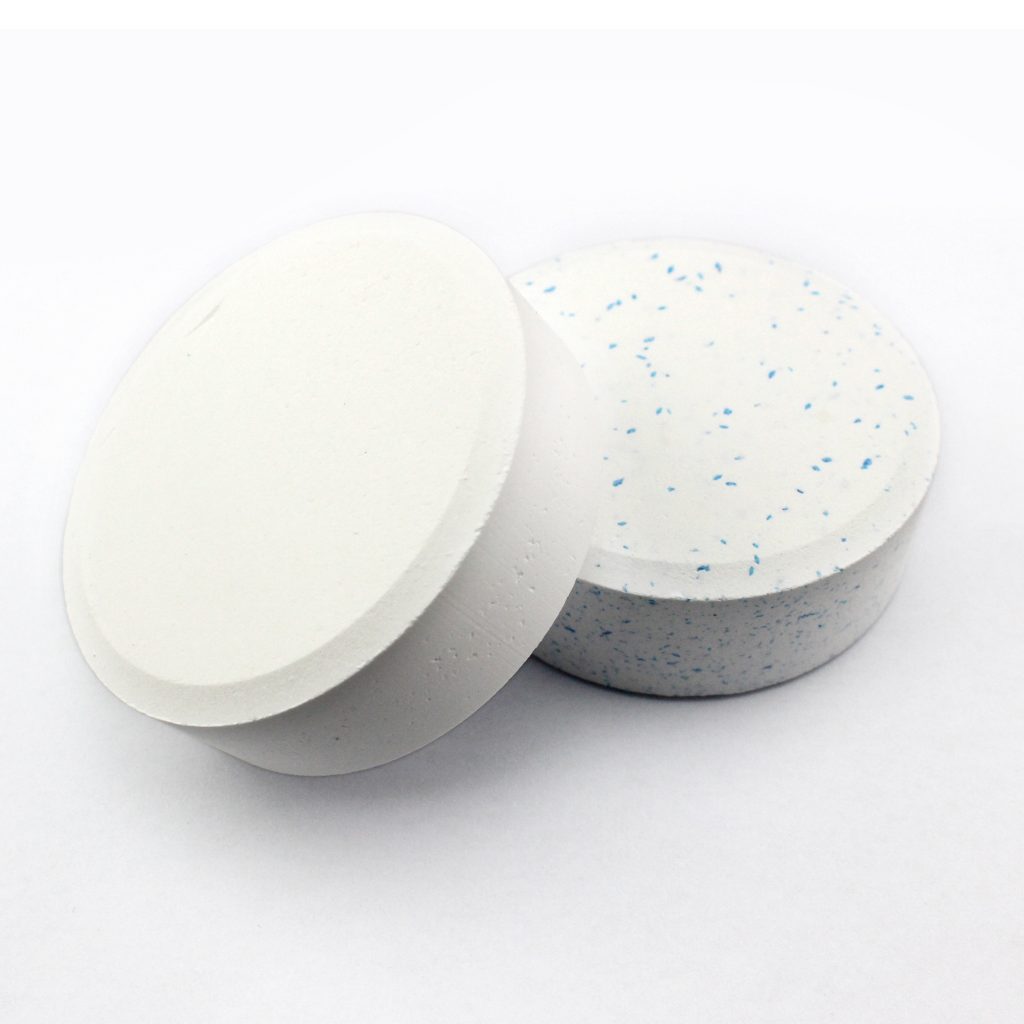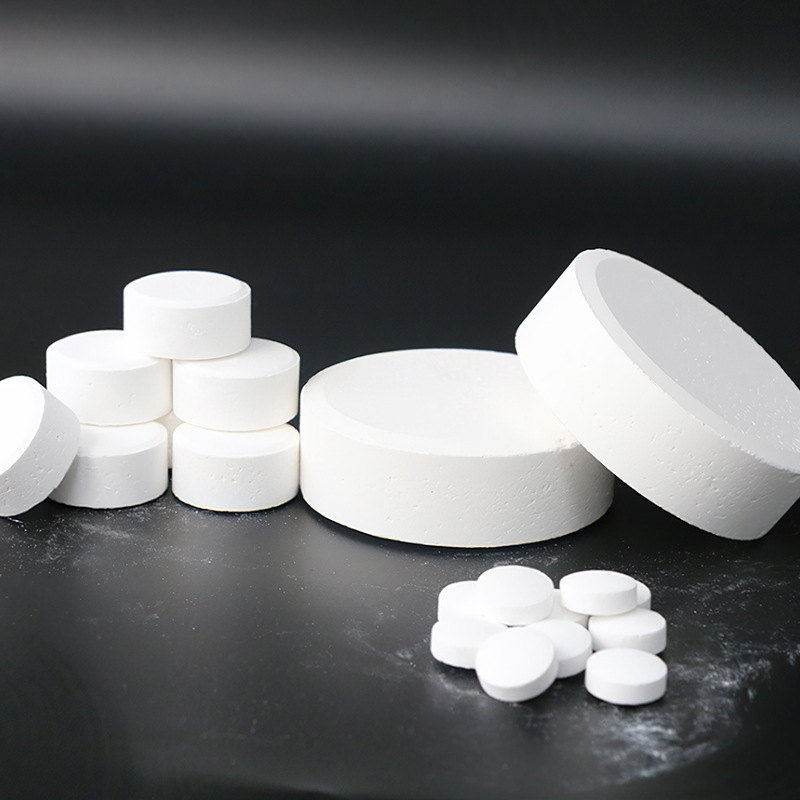Maintaining the cleanliness and safety of your swimming pool is essential, and ensuring the correct chemical balance is a key part of pool care. One of the most important chemicals for pool sanitation is chlorine tablets. But how do you know when it’s time to add them? In this blog, we’ll explain how to test your pool water and determine whether it’s time to use chlorine tablets. This guide is particularly useful for pool owners and those looking to purchase from a reliable wholesale chlorine tablet manufacturer or a reputable chlorine tablets factory.

I. Why Regular Pool Water Testing is Essential
Testing your pool water isn’t just a chore; it’s an essential step in keeping your pool safe and healthy. Without proper water balance, bacteria and algae can thrive, causing potential health hazards and expensive maintenance issues. Chlorine plays a critical role in killing harmful bacteria and maintaining crystal-clear water, but adding too much or too little can cause problems.
For effective pool maintenance, you need to know the exact chlorine levels in your water. This is where regular testing comes in. By staying on top of your pool’s chemical levels, you can avoid overusing or underusing chlorine tablets, which ensures an optimal swimming experience for you and your family.
II. Tools You’ll Need to Test Pool Water
Testing your pool water doesn’t require expensive tools. Here are the essentials:
Test Strips: These are affordable and simple to use. They test for chlorine levels, pH, and other important water parameters.
Liquid Test Kits: These are slightly more accurate than strips and give a detailed breakdown of your pool’s chemical composition.
Digital Testers: For those who want high precision, digital testers provide accurate chlorine readings and are easy to operate.
Once you’ve decided on the right testing tool, you’re ready to check if your pool needs more chlorine tablets.
III. How to Test for Chlorine Levels
Follow these steps to check your chlorine levels effectively:
Collect a Water Sample: Use a clean container to take a water sample from at least 18 inches below the pool surface. Avoid testing water near the pool jets or skimmers, as the levels may not be accurate.
Use Your Test Kit: Follow the instructions on your chosen test kit to measure the chlorine level in the sample. Look for “free chlorine” levels, which indicate the active sanitizing agent in the water.
Compare the Results: Ideal chlorine levels for pools typically range between 1 and 3 parts per million (ppm). If your results show less than 1 ppm, it’s time to add more chlorine tablets.
Proper testing ensures that you’re not over-chlorinating your pool, which could cause irritation to swimmers and damage pool equipment. For those sourcing tablets in bulk, buying from a trusted chlorine tablets factory ensures consistent quality and performance.
IV. Signs Your Pool Needs Chlorine Tablets
While testing is the best way to determine chlorine levels, there are some visual and physical signs that indicate your pool may require chlorine tablets:
Cloudy Water: If your pool water is no longer crystal-clear, it could be due to low chlorine levels.
Strong Odors: A heavy chemical smell often means there’s not enough free chlorine in the pool to neutralize contaminants.
Algae Growth: Green or slimy patches in the pool are clear signs that chlorine levels are insufficient.
Skin Irritation: If swimmers complain of irritation, this may be caused by unbalanced pool chemistry, including low chlorine levels.
By recognizing these signs early, you can act quickly and maintain pool safety by adding the right amount of chlorine tablets.
V. Choosing the Right Chlorine Tablets
Not all chlorine tablets are created equal, which is why choosing high-quality products is critical. Here’s what to look for:
Purity: High-quality chlorine tablets dissolve evenly and effectively sanitize your pool without leaving residue.
Size: Depending on your pool size, you may need small or large chlorine tablets. Always select the appropriate size for your pool’s needs.
Manufacturer: Always source your chlorine from a trusted wholesale chlorine tablet manufacturer to ensure quality, cost-effectiveness, and consistency.
When purchasing, it’s beneficial to buy in bulk from a chlorine tablets factory, especially if you own a commercial pool or are a frequent user. Bulk purchases often result in better deals and long-term savings.
VI. Tips for Maintaining the Right Chlorine Levels
To avoid frequent adjustments, consider the following tips for maintaining consistent chlorine levels in your pool:
Use a Chlorine Dispenser: Floating dispensers or in-line chlorinators help distribute chlorine evenly across the pool.
Check Levels Weekly: Make it a habit to test your water weekly, or more often during periods of heavy use or extreme weather.
Store Chlorine Tablets Properly: Keep your chlorine tablets in a cool, dry place to prevent them from degrading.
Shock the Pool When Necessary: Periodically, you may need to use a pool shock treatment to boost chlorine levels and eliminate stubborn contaminants.
With these tips, you’ll enjoy a sparkling, safe pool year-round while getting the most out of your chlorine supply.
VII. Conclusion
Maintaining proper pool water balance doesn’t have to be a daunting task. Regular testing, combined with the right chlorine products, ensures your pool stays clean and inviting. By using high-quality chlorine tablets, you can effectively maintain safe chlorine levels and enjoy a worry-free swimming experience.
For those in need of large quantities, sourcing directly from a chlorine tablets factory or partnering with a wholesale chlorine tablet manufacturer is an excellent way to guarantee quality and value. Whether you’re a homeowner or manage a commercial pool, understanding when and how to add chlorine tablets is a crucial part of pool care.
Remember, proper testing and maintenance today will save you time and money in the long run, while ensuring the health and safety of everyone who enjoys your pool!

 Instant
Quote
Instant
Quote Email
Us
Email
Us